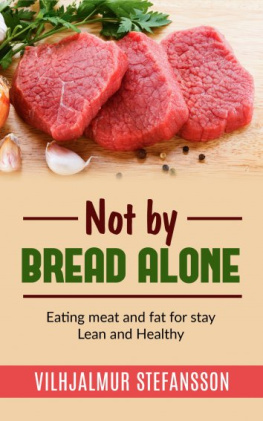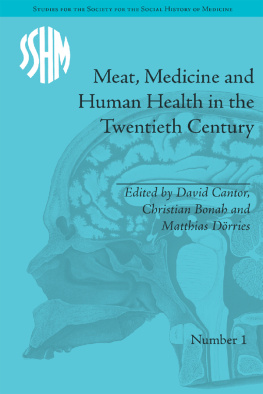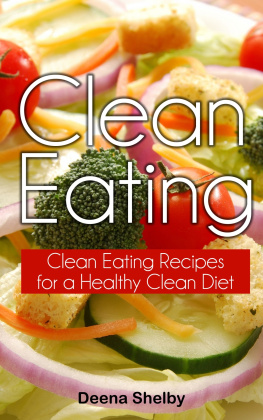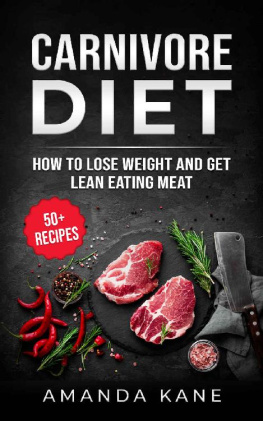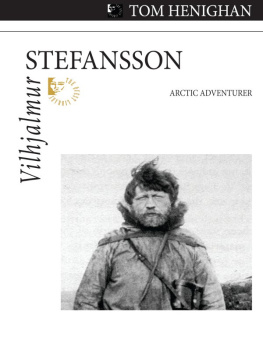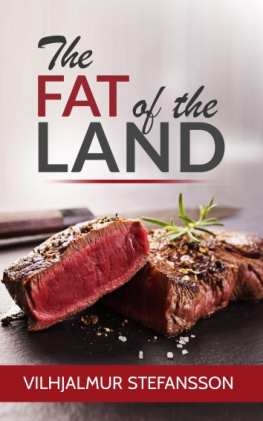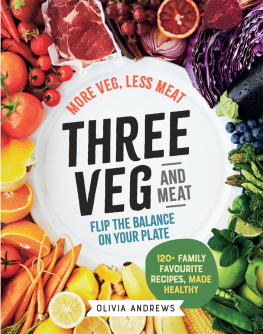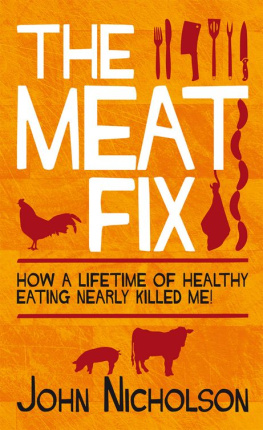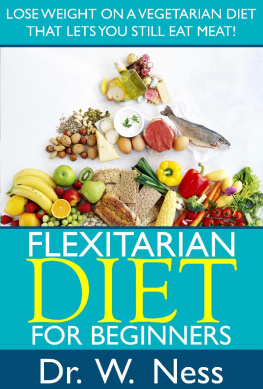Vilhjalmur Stefansson - Not by bread alone--Eating meat and fat for stay Lean and Healthy
Here you can read online Vilhjalmur Stefansson - Not by bread alone--Eating meat and fat for stay Lean and Healthy full text of the book (entire story) in english for free. Download pdf and epub, get meaning, cover and reviews about this ebook. year: 2016, publisher: Youcanprint, genre: Science. Description of the work, (preface) as well as reviews are available. Best literature library LitArk.com created for fans of good reading and offers a wide selection of genres:
Romance novel
Science fiction
Adventure
Detective
Science
History
Home and family
Prose
Art
Politics
Computer
Non-fiction
Religion
Business
Children
Humor
Choose a favorite category and find really read worthwhile books. Enjoy immersion in the world of imagination, feel the emotions of the characters or learn something new for yourself, make an fascinating discovery.
- Book:Not by bread alone--Eating meat and fat for stay Lean and Healthy
- Author:
- Publisher:Youcanprint
- Genre:
- Year:2016
- Rating:4 / 5
- Favourites:Add to favourites
- Your mark:
- 80
- 1
- 2
- 3
- 4
- 5
Not by bread alone--Eating meat and fat for stay Lean and Healthy: summary, description and annotation
We offer to read an annotation, description, summary or preface (depends on what the author of the book "Not by bread alone--Eating meat and fat for stay Lean and Healthy" wrote himself). If you haven't found the necessary information about the book — write in the comments, we will try to find it.
Not by bread alone--Eating meat and fat for stay Lean and Healthy — read online for free the complete book (whole text) full work
Below is the text of the book, divided by pages. System saving the place of the last page read, allows you to conveniently read the book "Not by bread alone--Eating meat and fat for stay Lean and Healthy" online for free, without having to search again every time where you left off. Put a bookmark, and you can go to the page where you finished reading at any time.
Font size:
Interval:
Bookmark:
Not by breadalone
Eating meat and fat for stayLean and Healthy
by
Vilhjalmur Stefansson
original edition by THE MACMILLANCOMPANY 1946 - 1st digital edition 2016 by
David De Angelis
Contents
Comment BY THEAUTHOR
"Contoversial" was the label pinnedon this first book's first edition. And why shouldn't itbe? The main allegations it set out to controvert were live issuesin 1946. The belief that man cannot be healthy on meat alone to ahigh age had by then perhaps already disappeared from the medicalschools; but it was still widely held by the public, who for themost part still clung to the opinion that a high meat percentage inthe diet was harmful, and that meat, or its effect, had to be"diluted" with things like carbohydrates. The last belief reallymeant that our forebears must have lived on a food pernicious tothem through the aeons, the million or so years which precededagriculture. For it is the consensus of the applicable sciences,and of history, that before agriculture most men lived most of thetime by hunting and fishing, and by gathering things like eggs,shellfish, grubs, berries in season, and a few roots and salad-typevegetables all of which would bulk large but would not yield manycalories. As to how things were before and after the coming ofagriculture in the usual views of historians and scientists, whichare background to our book and especially to this new edition, wequote from a recent and fascinating article by Johannes Iversen,anthropologist-botanist, in the magazine ScientificAmerican of March, 1956, "Forest Clearance in the Stone Age."The article begins: "Perhaps the greatest single step forward inthe history of mankind was the transition from hunting toagriculture. In the Mesolithic Age men lived by the spear, the bowand the fishing net. The change came independently at differenttimes in different parts of the world." Historians andarchaeologists believe generally that the shift from the hunterdiet, mainly of meat, to the gradually increasing carbohydrateblend of the agriculturist came less than 15,000 years ago in Chinaand the Near East; 5,000 years ago in Greece and Italy; 2,000 yearsago in England (Julius Caesar saw agriculture being introducedthere by Belgic settlers); and only 1,500 years ago in Scotland. Ifmeat needs carbohydrate and other vegetable additives to make itwholesome, then the poor Eskimos were not eating healthfully tillthe last few decades. They should have been in wretched state alongthe north coast of Canada, particularly at Coronation Gulf, when Ibegan to live among them in 1910 as the first white man most ofthem had ever seen. But, to the contrary, they seemed to me thehealthiest people I had ever lived with. To spread abroad the newsof how healthy and happy they and I were on meat alone was a largepan of the motive for writing this book. We do not disagree withIversen's "perhaps the greatest single step forward in the historyof mankind was the transition from hunting to agriculture," but wethink an interpretation is needed. Carbohydrate, gift of the fannerto us, makes civilization possible; for now we produce many timesmore food on a unit of land; we have large families and leisure, wehave built cities. But to make this a clear gain to man, it isnecessary for him to turn a great pan of the carbohydrate into meatand milk by feeding it to stock. Otherwise he suffers in individualhealth; and in happiness, for the unhealthy are unhappy. Andcarbohydrates, as this book helps to explain, are not conducive tooptimum health, at least not if taken as a high percentage of themeal. A distinguished orthodontist has said, in a passage we quotemore at length hereafter, that the Eskimos "are paying forcivilization with their teeth." And, as this book means toshow, the decay of teeth is only one of several important losses inhealth we suffer as a price of that food abundance which enables usto dwell in large cities and have "a high standard of living."Because of limited space we confine ourselves from here on tocomment on those two of our original thirteen chapters that haveproved most controversial. These chapters we attempt to bring up todate, within the space allowed. They are the fifth, "And Visit YourDentist Twice a Year," which, although no longer so controversial,needs some amplification; and the sixth, "Living on the Fat of theLand," which needs both addition of material and consideration ofstrong attacks against some of its contentions. In Chapter Five weconsider only two points: what the first edition says about lack oftooth decay among Eskimos as long as they were on a hunter diet,exclusively of meat; and what it says about the Icelanders havingbeen without dental caries during that part of their history, about600 years, when they were on a herdsman diet, that is, on meat plusmilk. We take Iceland first, because the new evidence there is morereadily condensed. There never were aborigines in Iceland; and theblood of the present population stems mainly from Ireland andNorway, with a total of probably less than 10 per cent fromDenmark, England, Scotland, and Sweden. From the beginning of thefirmly historical period, around 870, till after 1100, Iceland hadmatenal commerce with Europe, and imported some carbohydrates.Recent excavations of churchyards and other burial places revealtraces of a little tooth decay. But after isoo, when commerce isconsidered to have ceased, there was no tooth decay; nor does anyappear until after 1800, the approximate renewal date, by Iceland,of modern commerce with Europe. This information came to me in aletter from Kristjan Eldjar, Director of the National Museum,Reykjavik. He says it is now (1955) considered definitelyestablished that there was no dental caries during those 600 years,anywhere in Iceland. Today's dietary there is about that ofEngland, or of New England, and the caries rate is similar, withthe regulation dentistry, toothbrushing, hard chewing of food forthe good of the teeth, and the likeall, of course, withlittle result. During the decay-free period, 1200 to 1800, thefoods of the Icelanders were, in descending caloric importance:milk and milk products, mutton, beef, fish. There were, as we said,no imported carbohydrates; the only local non-animal food of anyimportance was, and then only in some places, soups made of Icelandmoss. The "moss," really a lichen, had to be secured by longjourneys to the mountains, which journeys, the literature shows,were summer picnicsmade more for fun than for food. It isPelion upon Ossa, and carrying coals to Newcastle, to harp on itwith an anthropologist that the tooth of a meat eater never decays.But the medical and related professions have seemed littleimpressed. Recently, however, signs of a new trend have come fromthe dentists, more especially perhaps from the orthodontists. Forhonors are descending on heretics who claim that, for healthyteeth, diet is more important than the toothbrush. An example isthe belated recognition of Dr. Leuman M. Waugh, of the School ofDental and Oral Medicine, Columbia University, whose heresies, likemany of my own, were derived from seeing what the European way oflife is doing to the Eskimos. During his early days. Dr. Waugh madetrips for five summers to Labrador, and discovered about toothdecay what Dr. William A. Thomas of Chicago was then discoveringthere about rickets: caries, like rickets, was worst where Europeanfoods were most eaten. Both troubles were nearly or quite absentwhere European goods were unknown or negligible. Later, through anumber of seasons, Dr. Waugh had similar opportunities for study inAlaska, where he found like evidence and drew like conclusions.Through the expedient of living to a high age, Dr. Waugh hasmanaged to be honored in his time and even by his own profession;as witness the Boston Daily Globe of i May 1956: "Dr.Waugh received the Albert H. Ketcham Memorial Award, highest honorof the American Association of Orthodontists, now holding their52nd annual session at the Statler." Among the points of Dr.Waugh's address to the "more than 1200 members and guests" werethese, according to the
Next pageFont size:
Interval:
Bookmark:
Similar books «Not by bread alone--Eating meat and fat for stay Lean and Healthy»
Look at similar books to Not by bread alone--Eating meat and fat for stay Lean and Healthy. We have selected literature similar in name and meaning in the hope of providing readers with more options to find new, interesting, not yet read works.
Discussion, reviews of the book Not by bread alone--Eating meat and fat for stay Lean and Healthy and just readers' own opinions. Leave your comments, write what you think about the work, its meaning or the main characters. Specify what exactly you liked and what you didn't like, and why you think so.

